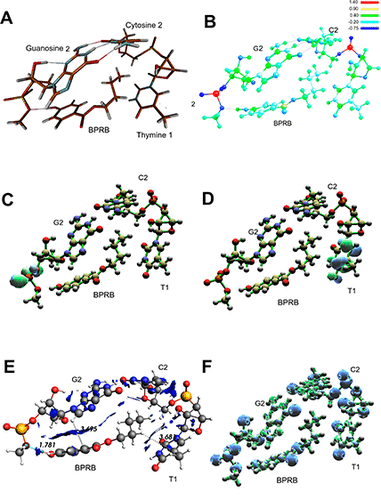当前位置:
X-MOL 学术
›
Chem. Res. Toxicol.
›
论文详情
Our official English website, www.x-mol.net, welcomes your
feedback! (Note: you will need to create a separate account there.)
Bonding of Butylparaben, Bis(2-ethylhexyl)-phthalate, and Perfluorooctanesulfonic Acid to DNA: Comparison with Benzo[a]pyrene Shows Low Probability for Strong Noncovalent DNA Intercalation
Chemical Research in Toxicology ( IF 3.7 ) Pub Date : 2017-11-29 00:00:00 , DOI: 10.1021/acs.chemrestox.7b00265 Sergio Manzetti 1, 2
Chemical Research in Toxicology ( IF 3.7 ) Pub Date : 2017-11-29 00:00:00 , DOI: 10.1021/acs.chemrestox.7b00265 Sergio Manzetti 1, 2
Affiliation

|
Parabens, phthalates, and perfluorinated compounds are pollutant compounds used in cosmetics, plastics, and fire-fighting foams. All three compounds have been studied over several years for toxicity mechanism; however, a clear view of their ability to bind to DNA has not been supplied empirically. In this work, a simulation study is done to reveal the interaction of three of these pollutants, bis(2-ethylhexyl)-phthalate (DEHP), butylparaben (BPRB), and the protonated form of perfluorooctanesulfonic acid (PFOS(H)), with DNA. The results show that the DEHP, PFOS(H), and BPRB bind with a probability of 1/5 to DNA, with respective bonding energies −23.96 kJ/mol (PFOS(H)), −94.92 kJ/mol (BPRB), and −216.52 kJ/mol (DEHP). The positive control, benzo[a]pyrene diol epoxide (BAP), which is known for its notorious DNA intercalation, binds at a rate of 3/5 simulations, with bonding energies of −6544.52, −7034.66, and −7578.67 kJ/mol. The results are compared to empirical studies and conclusively show that all these pollutants can interfere with transcription and DNA related mechanisms by forming noncovalent interactions with DNA. The results show also that these pollutants are unlikely to undergo strong noncovalent intercalation to DNA, such as BAP, and do not possess the frontier orbital profiles to undergo adduct formation. After many years of research and several unanswered questions on the action of these pollutants on DNA, a calculation on their properties hence to the DNA confirms that there is a low probability for these to undergo a strong intercalation with DNA. Literature shows however that the pollutants are strongly interfering with the protein machinery and receptors on the cell surface and are therefore still priority pollutants for ecotoxicity research.
中文翻译:

对羟基苯甲酸丁酯,邻苯二甲酸双(2-乙基己基)酯和全氟辛烷磺酸与DNA的键合:与苯并[a] py的比较显示出强非共价DNA嵌入的可能性低
对羟基苯甲酸酯,邻苯二甲酸酯和全氟化合物是化妆品,塑料和消防泡沫中使用的污染物。对这三种化合物的毒性机理已进行了数年的研究。然而,没有凭经验提供它们结合DNA的能力的清晰视图。在这项工作中,我们进行了模拟研究,以揭示这三种污染物中的三种的相互作用:双(2-乙基己基)-邻苯二甲酸酯(DEHP),对羟基苯甲酸丁酯(BPRB)和全氟辛烷磺酸的质子化形式(PFOS(H)),与DNA。结果表明,DEHP,PFOS(H)和BPRB以1/5的概率与DNA结合,键能分别为-23.96 kJ / mol(PFOS(H)),-94.92 kJ / mol(BPRB),和-216.52 kJ / mol(DEHP)。阳性对照苯并[a] py二醇环氧化物(BAP),以其臭名昭著的DNA嵌入而著称,结合速率为3/5模拟,结合能为-6544.52,-7034.66和-7578.67 kJ / mol。将结果与经验研究进行比较,并最终表明,所有这些污染物都可以通过与DNA形成非共价相互作用来干扰转录和与DNA相关的机制。结果还表明,这些污染物不太可能对DNA进行强烈的非共价插入,例如BAP,并且不具有前沿的轨道分布来形成加合物。经过多年的研究并就这些污染物对DNA的作用提出了若干悬而未决的问题,对其污染物对DNA的性质进行的计算证实,这些污染物与DNA发生强烈插入的可能性很小。
更新日期:2017-11-29
中文翻译:

对羟基苯甲酸丁酯,邻苯二甲酸双(2-乙基己基)酯和全氟辛烷磺酸与DNA的键合:与苯并[a] py的比较显示出强非共价DNA嵌入的可能性低
对羟基苯甲酸酯,邻苯二甲酸酯和全氟化合物是化妆品,塑料和消防泡沫中使用的污染物。对这三种化合物的毒性机理已进行了数年的研究。然而,没有凭经验提供它们结合DNA的能力的清晰视图。在这项工作中,我们进行了模拟研究,以揭示这三种污染物中的三种的相互作用:双(2-乙基己基)-邻苯二甲酸酯(DEHP),对羟基苯甲酸丁酯(BPRB)和全氟辛烷磺酸的质子化形式(PFOS(H)),与DNA。结果表明,DEHP,PFOS(H)和BPRB以1/5的概率与DNA结合,键能分别为-23.96 kJ / mol(PFOS(H)),-94.92 kJ / mol(BPRB),和-216.52 kJ / mol(DEHP)。阳性对照苯并[a] py二醇环氧化物(BAP),以其臭名昭著的DNA嵌入而著称,结合速率为3/5模拟,结合能为-6544.52,-7034.66和-7578.67 kJ / mol。将结果与经验研究进行比较,并最终表明,所有这些污染物都可以通过与DNA形成非共价相互作用来干扰转录和与DNA相关的机制。结果还表明,这些污染物不太可能对DNA进行强烈的非共价插入,例如BAP,并且不具有前沿的轨道分布来形成加合物。经过多年的研究并就这些污染物对DNA的作用提出了若干悬而未决的问题,对其污染物对DNA的性质进行的计算证实,这些污染物与DNA发生强烈插入的可能性很小。











































 京公网安备 11010802027423号
京公网安备 11010802027423号